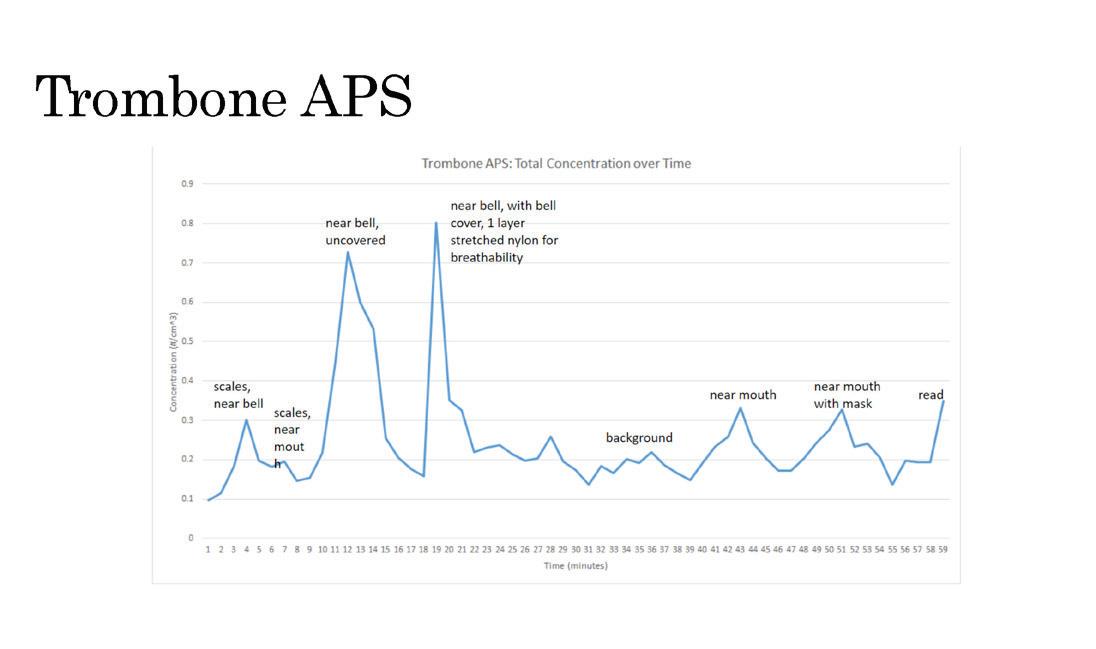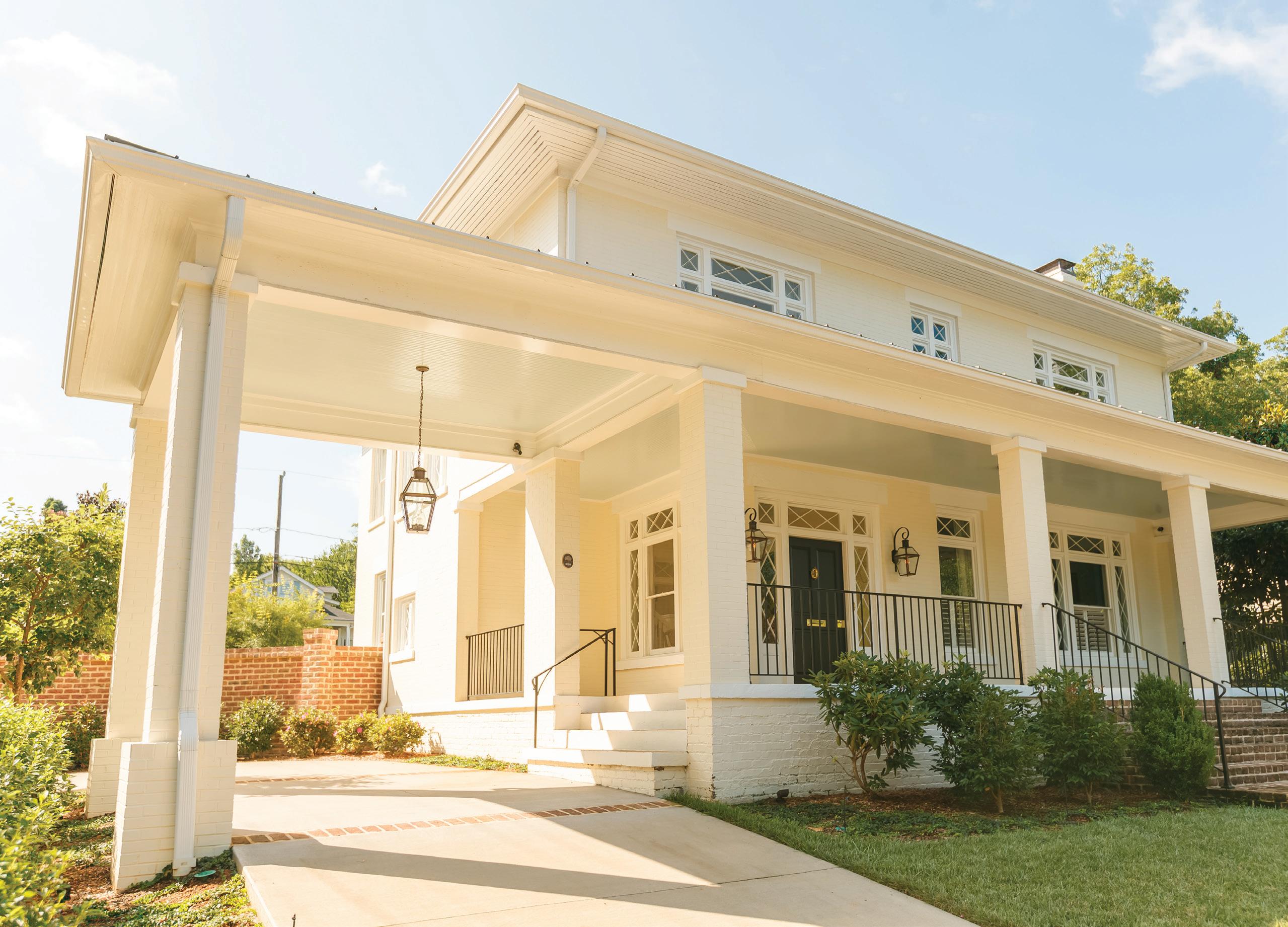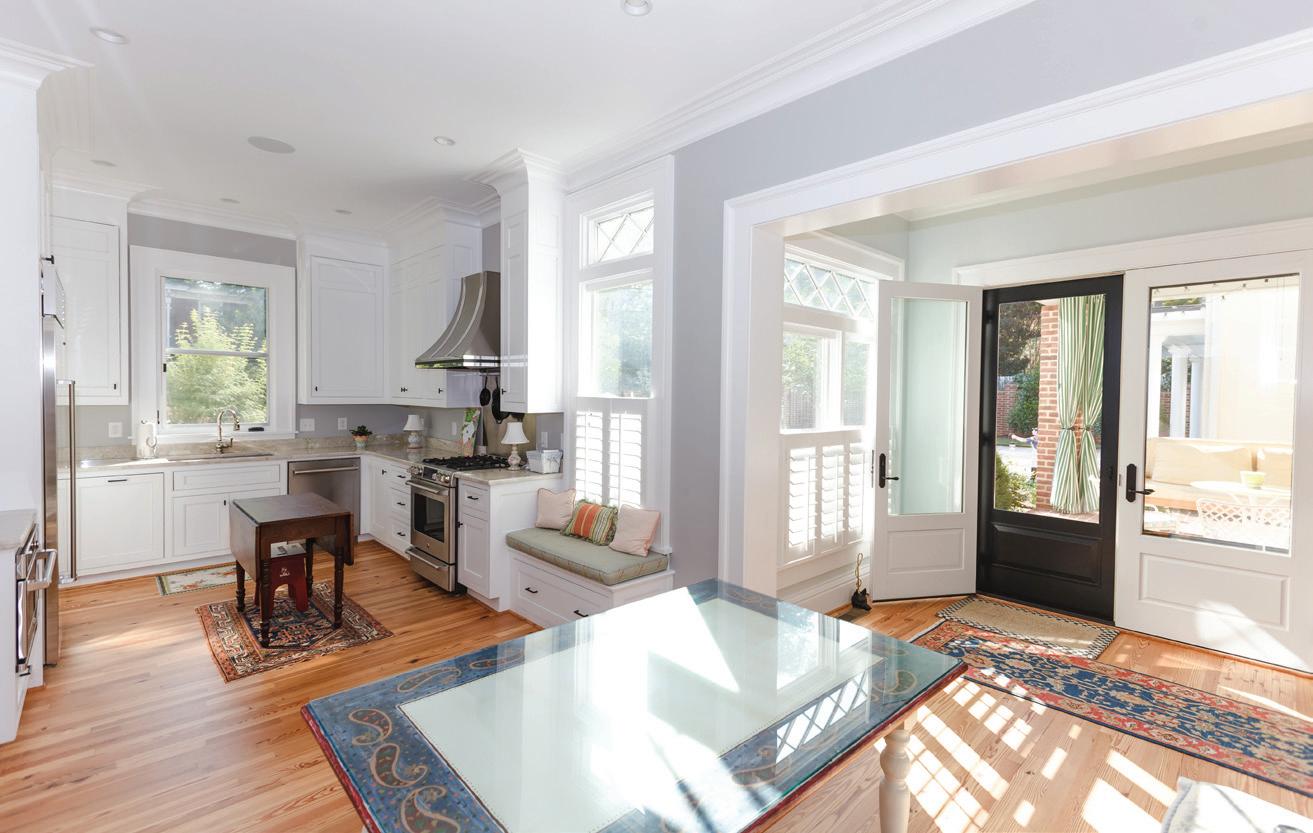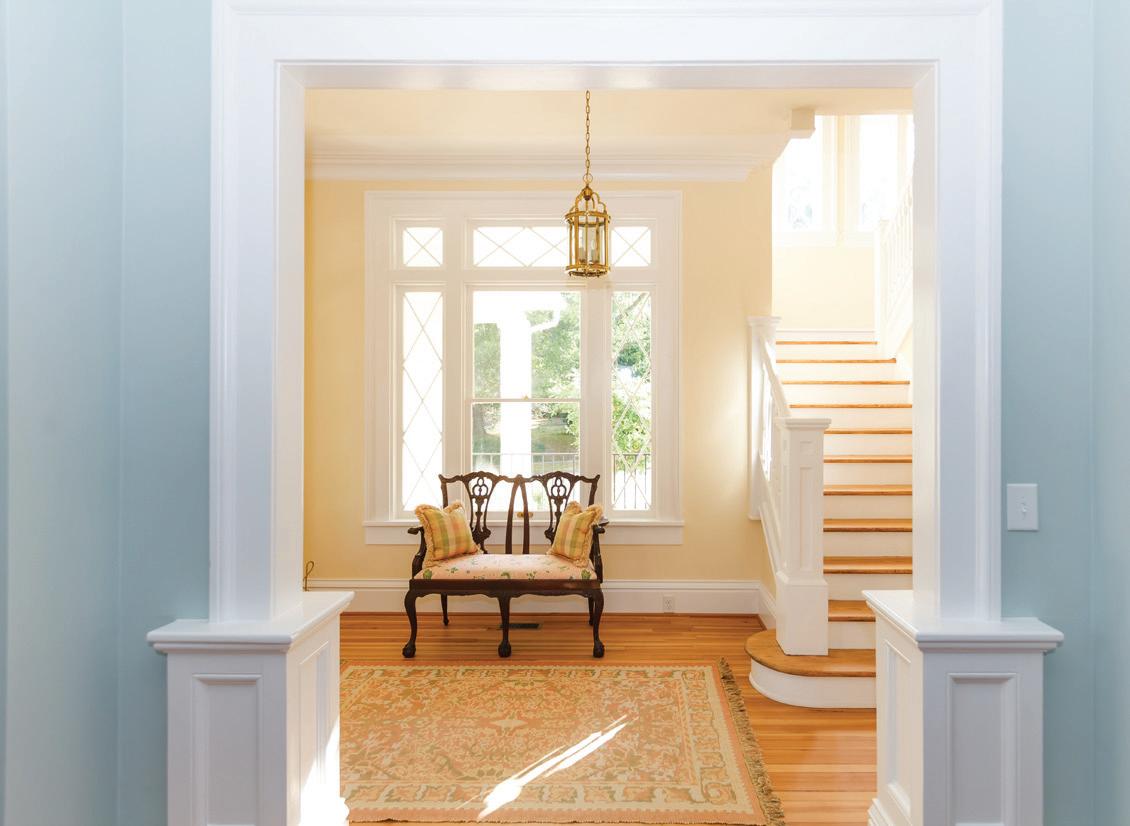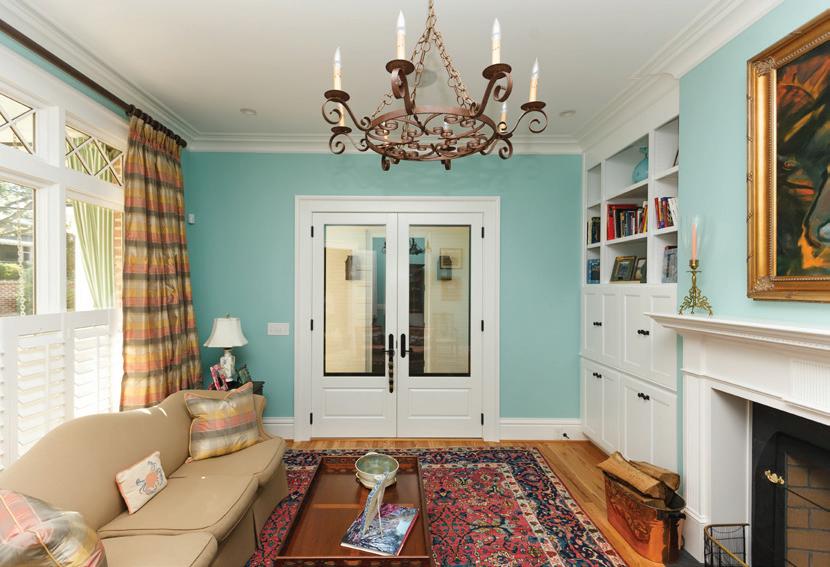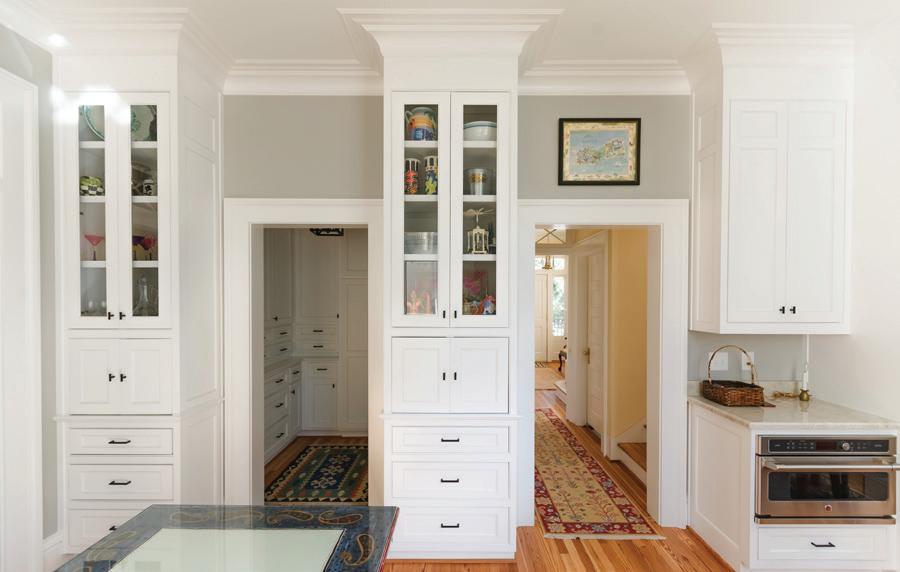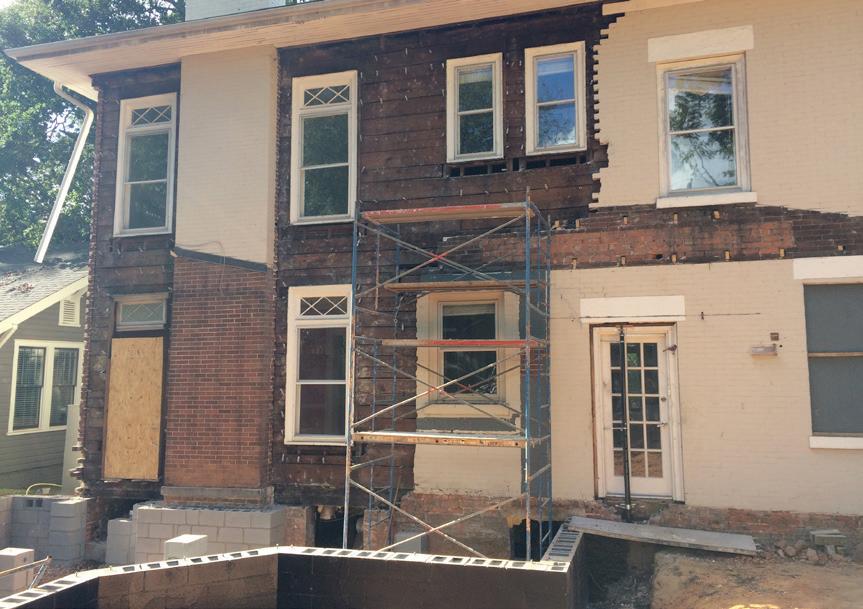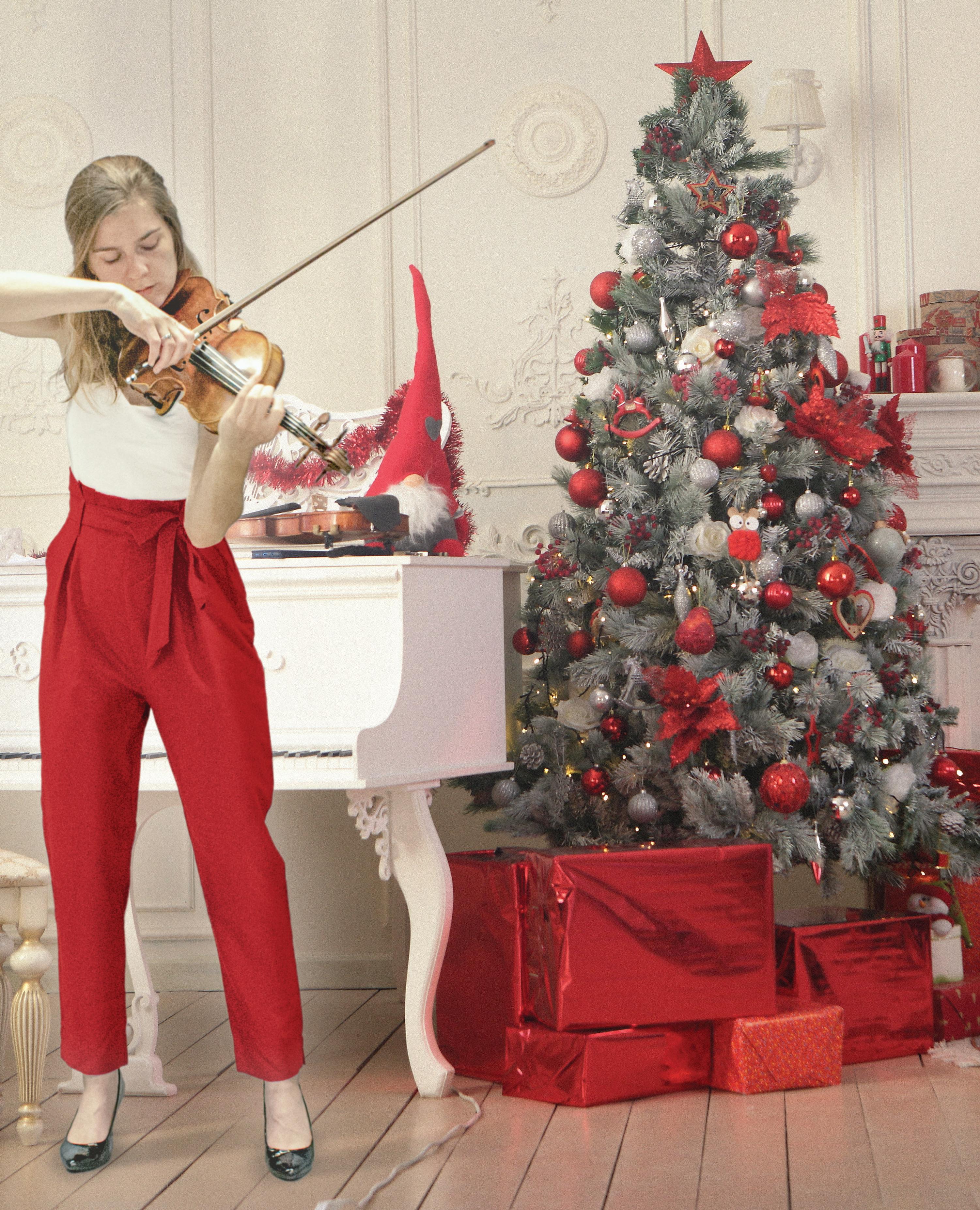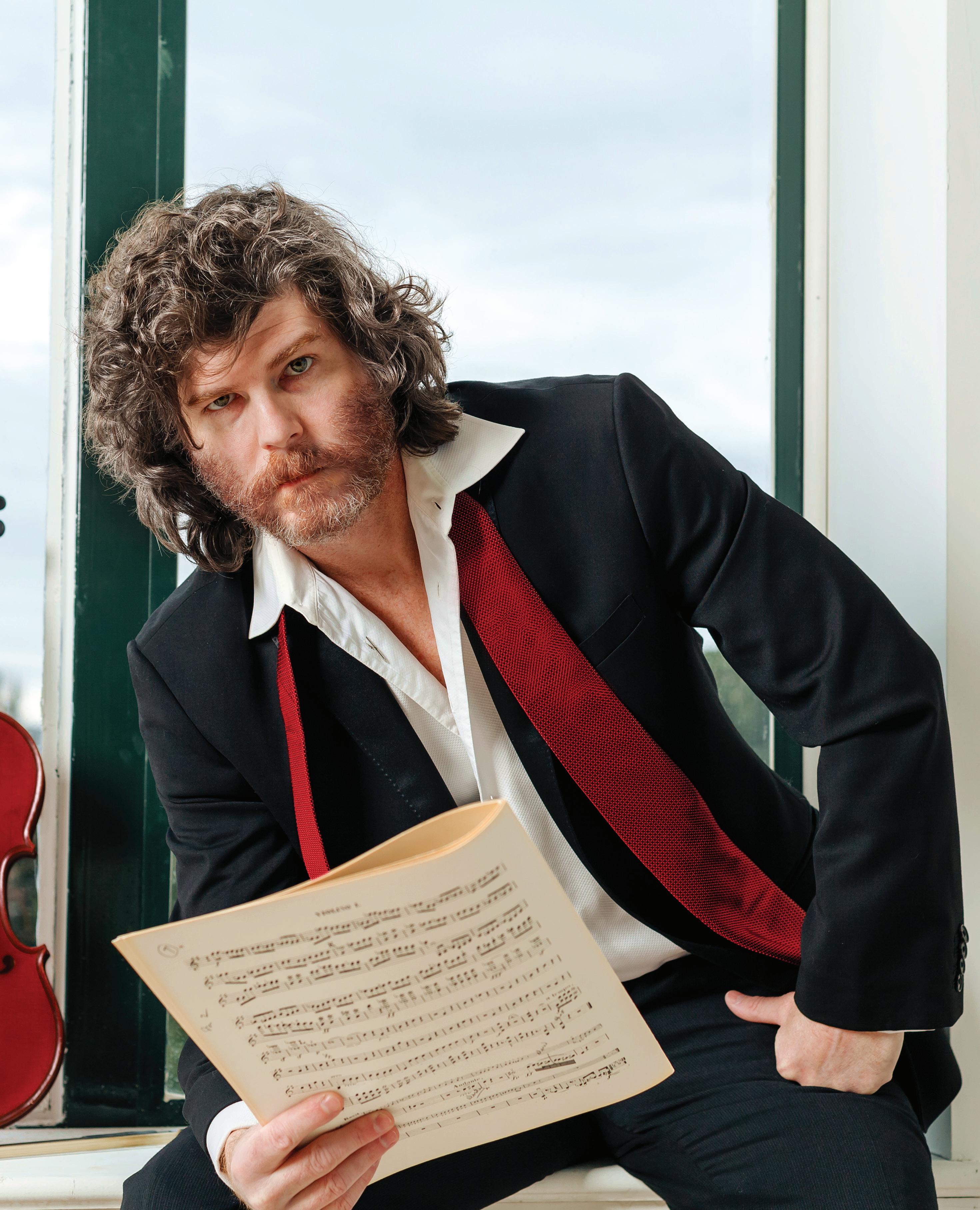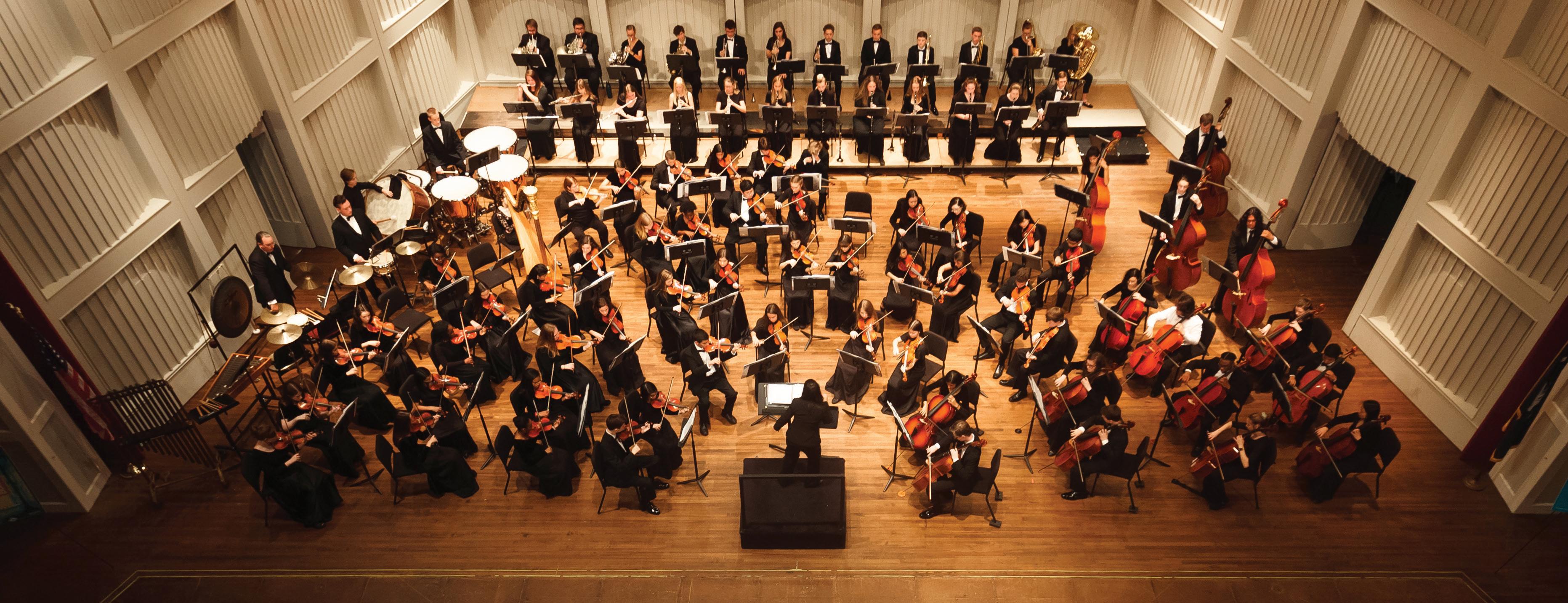
12 minute read
Programming in a Pandemic
from Original Concept to Variations
Hello! In case we haven’t formally met yet, allow me to introduce myself: I am Courtney Oliver, Marketing and Special Events Manager for the Spartanburg Philharmonic. You may have seen me behind our marketing table at concerts or chatted with me on the phone when you purchased your subscription. When I joined the organization in July of last year the 2019- 2020 concerts were already planned and announced and I excitedly dove in to telling the story of our “Locally Sourced” season. However, part of me was already excited to help plan the next. Trust me, there was plenty of excitement to be had in our 2019-2020 concerts, something I thoroughly enjoyed telling people about. However, a professional orchestra can never just concentrate on the season at hand. We are constantly thinking and planning for the next, and the season after that, and the season after that. It is a constant cycle that is as exhilarating as it is challenging to every member of the organization, because it truly does take the talents of the entire Philharmonic staff to create a season.
Advertisement
While the music itself will always be the driver of each concert, it’s my job to tell the story of the season. I find the common theme woven through each concert’s
Courtney Oliver Marketing & Special Events Manager
program to find new ways to add new interest to familiar and beloved symphonies, to engage new audiences, and quite frankly, convince all of you that it is a season worth spending with us. My work however, doesn’t truly begin until at least the core pieces or overall theme of a concert has been chosen, and that’s where we rely on the leadership of our Music Director, Stefan Sanders. His specific challenge each season is to select pieces from a vast catalogue of beloved classics and vibrant contemporary selections that work in harmony to make a must-see concert experience. It’s also a delicate balance of the mundane necessity (budget vs our “wishlist”) and creative inspiration. It is truly a team effort, as we alternate between collegially and passionately debating each other’s ideas and perspectives on everything from music selections to concert theme and everything in between. It is challenging, but ultimately rewarding work, as we build a season that we are incredibly proud to present to our family of classical music lovers.
What happened after that is by now a familiar refrain. We launched our 2020/21 Season within weeks of the first coronavirus surge in the United States, and by midMarch performing arts organizations and businesses
alike were shutting their offices and figuring out what it meant to stay and work at home. During April and May the entire Philharmonic staff optimistically pushed forward with our season subscriptions and sought to be a source of continued inspiration with Together SpARTanburg (page 48). But in my experience, optimism should always be tempered with realism, and as we watched the infection rates climb in our community, we all started to envision new ways forward and to contemplate what changes must be made if we were going to realistically present concerts this fall. As we shared with our “Variations on a Season” announcement, we have embraced a new story. One where our music temporarily lives on the digital stage, one where we are still connected by a love of music, and a desire to see and hear it play. This story is not mine alone though. As I said, it takes the talents of the entire staff to put together a concert program and we each have our own perspectives on how we created our Variations. seen the cancellation of countless concerts around the were intent to not cancel concerts. Instead, we chose of time. We’ve learned that the digital platform provides our audiences and musicians a way to interact in the most intimate settings. Our concerts will feature programs directly related to our community and celebrate composers from diverse backgrounds. One of our most essential roles as an organization is to connect people to music. We are all finding our way through this new normal, and I’m certain that we can still make that connection. The manner might change, but the
essence does not. Courtney: Stefan, we joke in the office that we’re on “plan ZZ.25” for our Fall 2020 concerts, but in reality we’ve gone back and forth a lot on what we could and could not present. As Music Director, what factors lead you to choose the pieces you did, and how much did the smaller scale and the shift to online affect your decisions?
Courtney: Kathryn, as Executive Director, Stefan: First and foremost, safety. Necessary limitations to our in-person audience capacity as well you’ve stayed on top of the news as orchestras and arts as the on-stage musician capacity, both due to social organizations across the country are canceling concerts distancing requirements, have guided our online and closing their doors. In the midst of all this, can you program directions. As you mentioned previously, it is share what guided the Philharmonic in our decision to important to know that our entire 2020/2021 season was hold our fall concerts online? announced just a couple of weeks before the pandemic hit and subscriptions were selling quite well. That being Kathryn: Music is essential. This year has online programs. Hence the first program, Heroes & Revolution (page 30). Ludwig: world. We want to shift the narrative from despair to Originally Ludwig was meant to be the Philharmonic’s hope, from loneliness to connection, and from artistic celebration of Beethoven’s 250th anniversary including void to vitality. As we crafted this season, we asked his Violin Concerto and the Third Symphony “Eroica”, a ourselves: How can we show up for our community to work that explores the concepts and ideals of heroism. create experiences that will bring us together in ways When the decision to go online was made we knew that keep our artists and community safe? That was how this program wouldn’t work for a couple of reasons. our fall season came together. Firstly, the issue of time. Beethoven’s Violin Concerto is The safety and well-being of our staff, musicians, minutes long. Without the customary intermission and and audience is - and has been - at the center of our built in socializing that our live performance atmosphere decisions. We knew we had to make a change due offers, we felt this was too much music for the online to the restrictions on social distancing, and yet we format we wanted to achieve. to transform the experience for our audience while Secondly, and more importantly, in the midst of a global providing an opportunity for our musicians to come acceleration towards racial equality, we wanted to together and perform. expound upon the concepts of heroism that Beethoven In connecting with peers across the country, our staff music of two black composers: the first a contemporary learned of many resources, technology platforms and of Beethoven, Joseph Bologne, Chevalier de Saint opportunities for our season to become a hybrid of Georges and the living composer Daniel Bernard digital and in person. Like so many industries, orchestras Roumain, and his piece “Klap Ur Handz”, which is the are relatively new to the field of creating digital content, second movement from his string quartet No. 5 entitled and we’ve exploded on to the scene in a short amount “Rosa Parks.” Our theme shifted from celebrating one said, we wanted to keep what we could intact with the forty minutes long and the “Eroica” approximately 45 dealt with in his Third Symphony by including the
my.sphil.org/Variations
musical hero, Beethoven, to the reality of heroism having many faces.
The cancellation of our Nutcracker collaboration with Ballet Spartanburg compelled us to put together a family friendly holiday program entitled ‘Burg Bound: A Stay-at-Home Holiday Concert (page 42) with the goal being to bring people together for a sort of “showcase” that featured local artists and partners in our community. Along with spirited holiday music and wonderful arrangements by Composer in Residence, Peter B. Kay, the program features our partnerships with the Hub City Bookshop, Ballet Spartanburg, Spartanburg Little Theater, renowned banjo artist Kristin Scott Benson, and of course, our fabulous Philharmonic musicians.
Courtney: You heard it hear first, Spartanburg Little Theatre, Ballet Spartanburg, Hub City Bookshop, and our own Bluegrass musician in residence - Kristin Scott Benson, all in one concert! This is a story, I can’t wait to tell you more about as we finalize all the details.
Now Peter, as General Manager you’ve been given the somewhat herculean task of figuring out how to make the concert experience safe for our musicians. Can you share how we’ve approached the new idea of a “socially distanced” orchestra for this fall and how the Philharmonic is preparing to leap into presenting concerts digitally?
Peter: In rethinking our fall line-up, there were two very important, health-related, factors that we had to consider on stage. First, as Covid-19 is transmitted primarily through the air, is it safe to have woodwinds and brass instruments? Not only are these breathpowered instruments, but it is exceedingly difficult to play them while wearing a mask. Second, how many musicians can we fit on the stage while observing the recommended 6-foot minimum distance between players?
Symphonies around the world have been concerned about the use of wind and brass instruments, and several European orchestras began internal studies early in the spring. Preliminary results suggested that there was “no increased risk” (Vienna Philharmonic) when wind and brass instruments are present as long as masks are worn and social distancing is observed. More in-depth research, like the International Coalition of Performing Arts Aerosol Study that has brought together scores of specialists, organizations, and colleges from around the world, seem to corroborate Vienna’s initial findings but with several additional conditions (visit NHFS.org for
8 feet between winds and brass players Top-Down Schematic for Ludwig
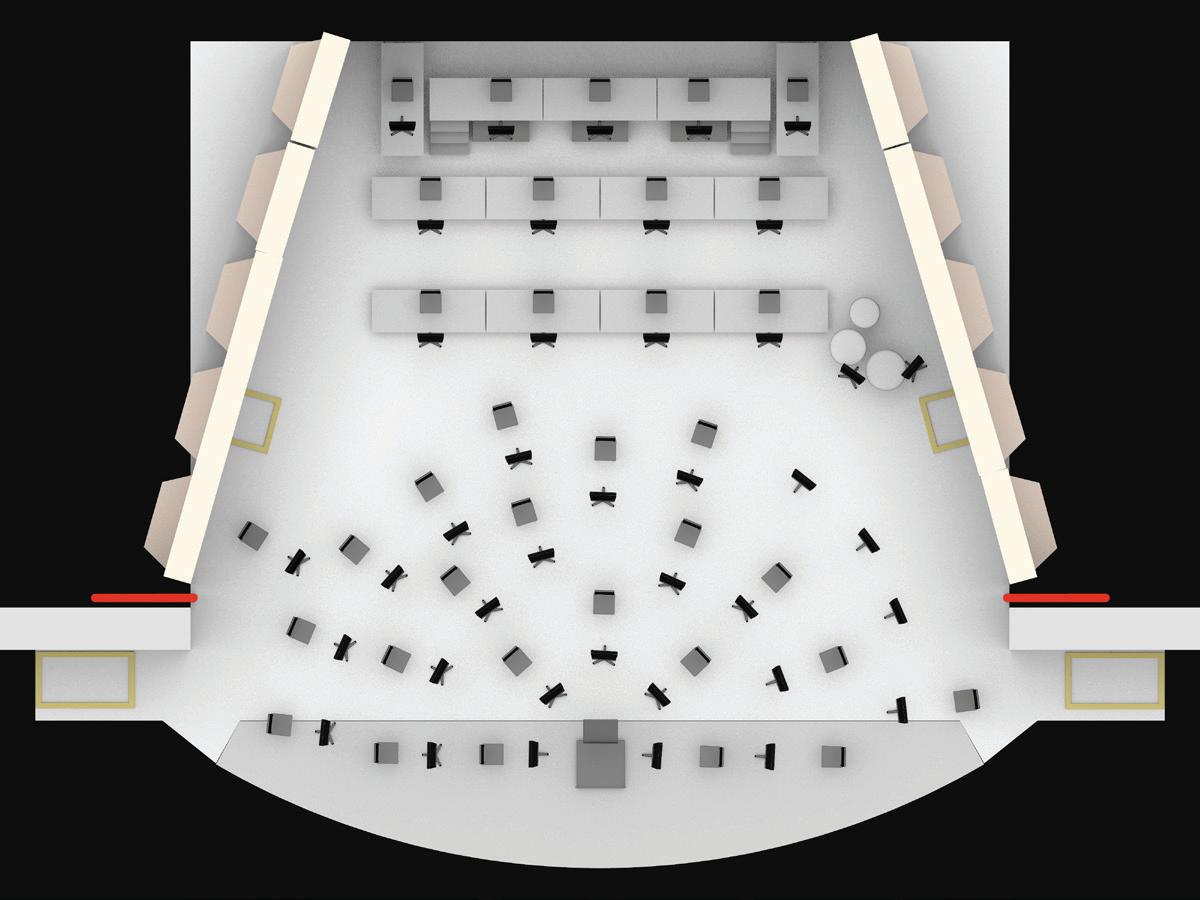

3-D Mockup for Ludwig

more information). For example, because of the reach of the instrument, it is recommended that trombones have an additional 3-6 feet of space. These studies are still on-going, and we are watching the science develop in real-time. We will remain flexible and try to adhere to updated recommendations as they are released.
In a way, we were truly fortunate this fall. For stylistic and logistical reasons, the original programs for Ludwig and The Nutcracker already called for smaller orchestras, so we didn’t have to start from scratch on these concerts. We had planned to perform Beethoven’s “Eroica” with about 50 musicians on stage, and the Nutcracker is scored for an even smaller ensemble so that it can fit into the pit. Neither concert required trombones or tubas, and the number of woodwinds for each was minimal. When looking at our spring concerts, this was already a very lopsided season, so to speak. Gustav Holst’s “The Planets” (March 2021) and the music of John Williams (May, 2021) call for at almost 80 musicians each.
Working from Twichell’s 1988 renovation blueprints – which have hung as merely a decoration on my office wall for the last three years – and working with Technical Director Mayes Hopkins and Assistant Technical Director E.J. George at Converse College, I created a more detailed, computer-generated version of the stage, chairs, music stands, etc. than I’ve used in the past (accuracy being far more important now). In this 3D digital space, we were able to get a good sense of possible concert layouts, which informed us of the number of musicians that could safely fit on Twichell’s stage. From the front of the apron all the way to the organ in the back, we found that we could safely fit about forty musicians with about 6-8 feet between each.
There are many more logistical aspects to creating a healthy environment for our staff and musicians during rehearsals and recording sessions. Everyone will be required to wear masks. To reduce exposure, we are holding fewer rehearsals which will be reconfigured to include more breaks, allowing the room to “air out.” Several of the new pieces are scored for strings only, so the winds and brass need not be present for the rehearsals/recording of these works. Without an audience, musicians are afforded the ability to spread out, using the hall and the front lobby to unpack their instruments and warm-up as well as backstage. Since the end of May, we have been meeting and discussing with orchestra members ways in which we can safely come together to make music. The response has been exceedingly positive, and we are heartened by so many musicians excited to return to Twichell Auditorium.
Courtney: What I also find incredibly energizing about creating the season is that our work is only part of the story. Our audience, most notably all of you, are inevitably part of the story, because you are the reason we do what we do. The Spartanburg Philharmonic is incredibly lucky to have an audience that comes out in support of us season after season, but keeping you excited and engaged in the music we are presenting is a challenge that we do not take lightly.
The 2020/21 Season is definitely one that be remembered as a most challenging one in terms of planning and of balancing precaution and our ability to connect with all of you. While we must momentarily forgo the live concert experience, the online version will be rich with close-up views of the orchestra and of Stefan, an experience unlike any that you can have from your seat at Twichell. We continue to envision ways to enrich our “behind the shell” experience, giving you access to our musicians and connecting you with the Spartanburg Philharmonic like never before. From all of us; thank you for your grace, patience, and most of all, your continued support. We strongly believe that music is what will give us the inspiration required to get through the rest of this pandemic.
Below: Excerpts from recent results from the International Coalition of Performing Arts Aerosol Study. More information can be found online at: NHFS.org

